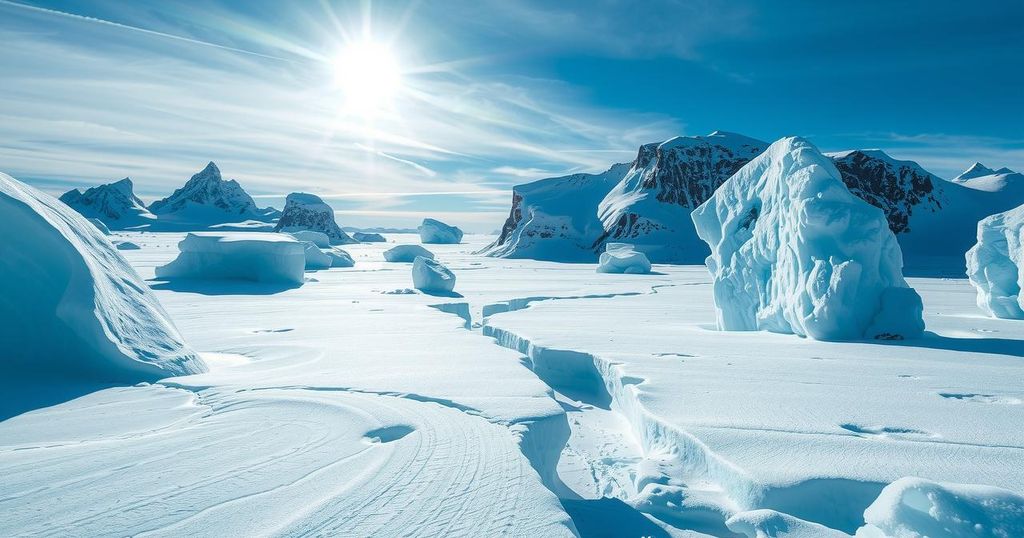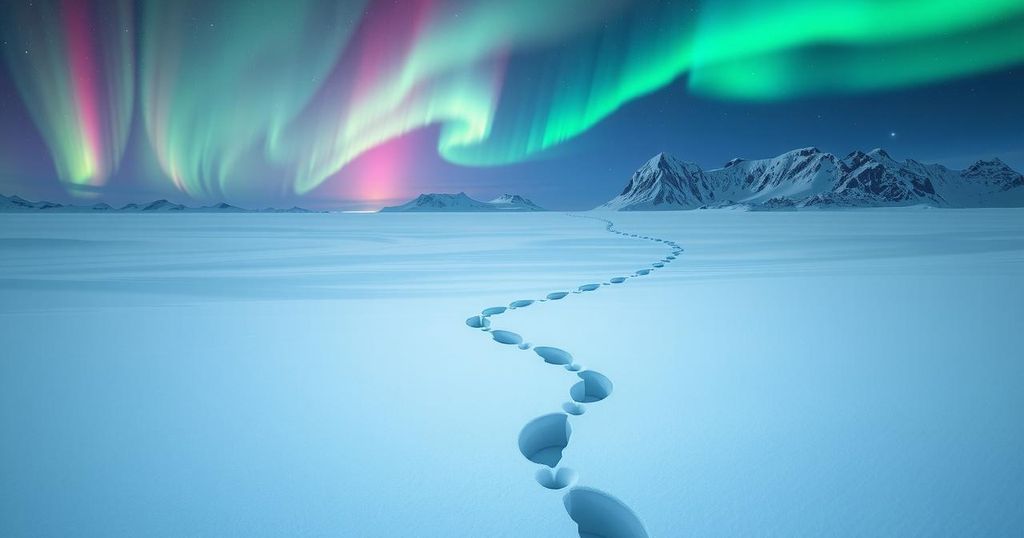Antarctica Gains Ice: A Temporary Anomaly Amid Global Warming
NASA satellite data indicates that Antarctica has gained ice recently, despite global warming trends. Researchers attribute this temporary anomaly to increased snowfall. However, this doesn’t reverse the long-term trend of significant ice loss, raising ongoing concerns about climate change’s impact on sea levels.
Recent data from NASA satellites has shown that Antarctica has surprisingly gained ice, despite the ongoing scourge of global warming. This may sound counterintuitive, but scientists caution against reading too much into this momentary uptick. Researchers from Tongji University in Shanghai, utilizing over two decades of satellite data, uncovered this anomaly of ice gain between 2021 and 2023 amidst a larger trend of significant ice loss.
So how did this happen? A spike in precipitation—essentially, an unusual bout of heavy snowfall—over Antarctica is primarily responsible for this increase. Imagine a ski slope where years of melting snow suddenly get blanketed by an unexpected, fluffy snowfall. It’s a momentary sigh of relief, but it doesn’t signal an end to the warming trend. Indeed, while the ice sheet gained approximately 119 billion tons per year recently, that’s minuscule compared to the losses reported in prior years.
To clarify, the overall picture for Antarctica paints a different story. From 2002 to 2020, the continent was steadily losing ice, with the rate of loss accelerating dramatically during those years. The numbers are daunting, leaping from an annual loss of around 81 billion tons to about 157 billion tons, according to the study published March 19 in Science China Earth Sciences. But from 2021 to 2023, those losses faced a temporary halt, leading to a brief gain.
Despite the good news of rising ice levels, researchers indicate that this is not a sign global warming has hit the brakes. Tom Slater, an environmental science research fellow at Northumbria University, pointed out that warmer climates usually lead to more moisture in the atmosphere. This creates conditions where unexpected heavy snowfalls are possible, which can temporarily increase the mass of ice. But it’s unlikely this will lead to any long-term shifts in trend.
So, what’s next? Although some glaciers in eastern Antarctica shifted from a pattern of accelerated ice loss to gaining mass, Slater warns that this uptick won’t last. The harsh reality is that the majority of the grounded ice losses stem from glacial flows into an increasingly warming ocean. Thus, while snowfall has thrown a temporary lifeline, the underlying issues remain unresolved.
Antarctica is of course not the entire picture of climate change. It turns out that different regions of the planet can experience climate change at drastically different rates. For instance, while temperatures have hovered on stable grounds in parts of Antarctica, the Arctic has heated up four times faster than the global average. For context, Antarctic sea ice has generally remained resilient, though recent years have seen troubling signs—like the record low sea ice noted in 2023, which researchers agree would have been nearly impossible without climate change’s touch.
Moving on, global temperatures have consistently neared record highs and sea ice levels continue to drop, reflecting the pressing reality of climate change. The Paris Agreement, formulated back in 2015 to limit worldwide warming, is hanging by a thread as the past several months have repeatedly breached the acceptable temperature limits.
As Earth continues to grapple with climate change, Antarctica serves as a critical piece in the puzzle. While questions linger about the sustainability of this newfound ice gain, one thing is clear—a warming world doesn’t guarantee warm welcomes everywhere, and understanding these patterns is vital for future action and policy.
In summary, while Antarctica’s recent ice gain seems like a surprising twist amid climate change, it’s important to recognize this is likely a temporary shift. Heavy snowfall, caused by a warmer atmosphere, has temporarily bolstered ice levels. However, the longer trend remains one of significant ice loss due to accelerated glacial movements into the warming ocean. As global temperatures continue to rise and sea ice records are broken, the alarming pace of climate change persists. With vital implications for global sea levels, watching Antarctica offers critical insights into our changing planet.
Original Source: www.livescience.com




Post Comment